One of the bigger questions that we’re regularly asked is “Which unit (spreader) do I need for my gardening tasks?” Or “Which one (spreader) is the biggest and best?”
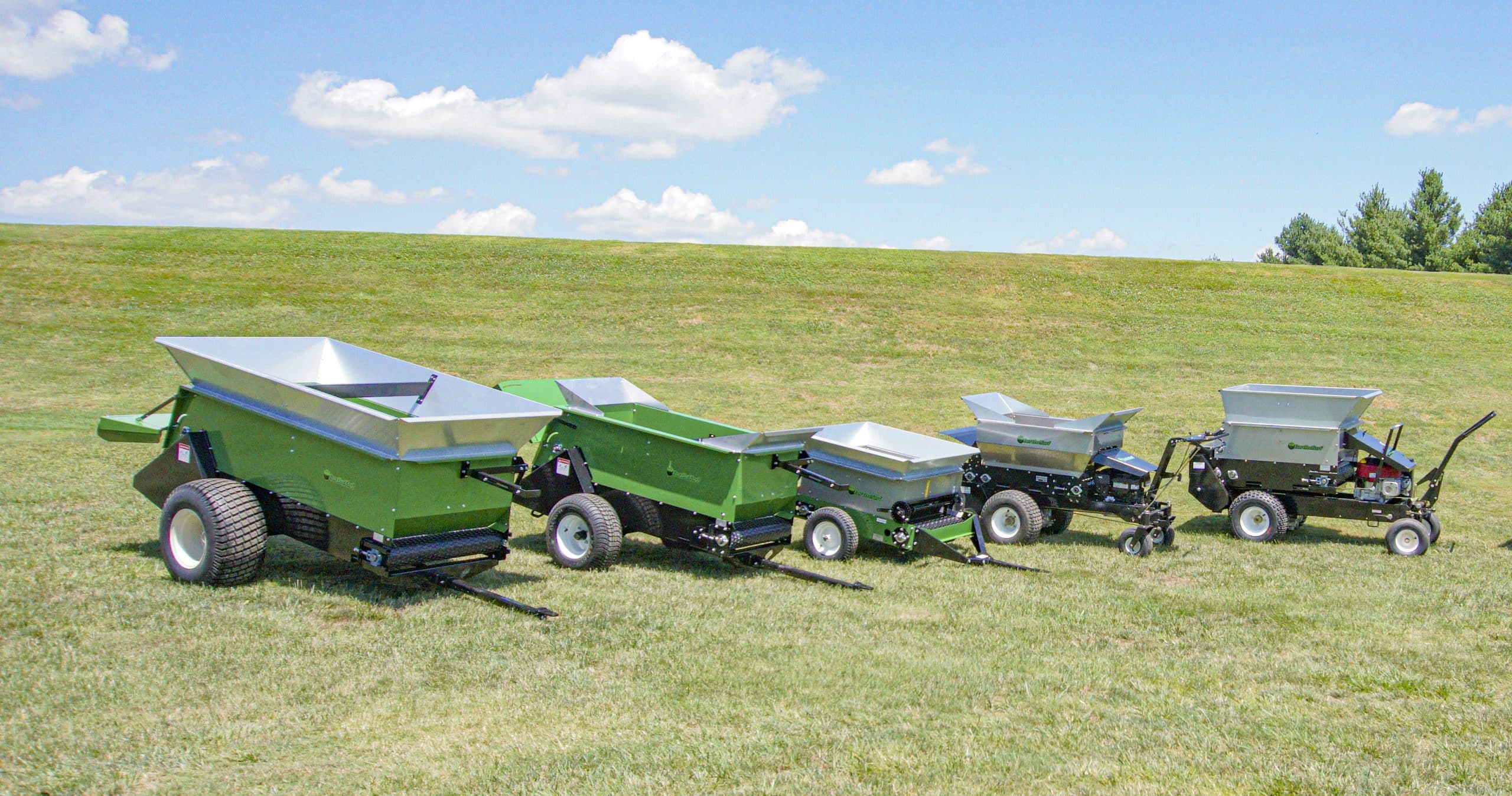
Many times, it depends on what you’re looking to accomplish. There are two main categories when working with gardens, both of which can be accomplished by all of our spreader models, but some models excel in specific areas. The two categories referenced that we’ll dig into are mulching and topdressing; it’s important to note that in the lawn and landscaping world, there is another form of this work that can be done with our machines called lawn leveling where sand is applied to smooth out for an area to create even and level surfaces with no pits. That will not be covered in this specific article.
Top Dressing
Topdressing is a subject that is central to our theme and is one that we will dig into first. Top dressing is the main purpose of our machines and showcases most of the diverse applications that we see, and it applies to anything from gardening to turf grass and more. Though there are a lot of different materials that can be used for topdressing, the main material we’ll discuss in this article is compost. Compost is a breakdown of many various materials, mainly, broken down and aged manure and chopped-up plant waste that’s been churned and allowed to age outside with moisture, sunlight, and air. Many ingredients make up good quality compost which add in other nutritious factors and would be something that can be researched on your own, however, a good compost is typically a blend of manure, wood shavings, and other biodegradable ingredients such as cardboard, coffee grounds, yard waste, and food scraps. Some of the best-finished compost is one that is well-balanced and dried, not stinky or steamy because that would be half raw. Good, finished compost is a consistent breakdown of those fine materials to retain moisture easily and is fibrous in consistency.
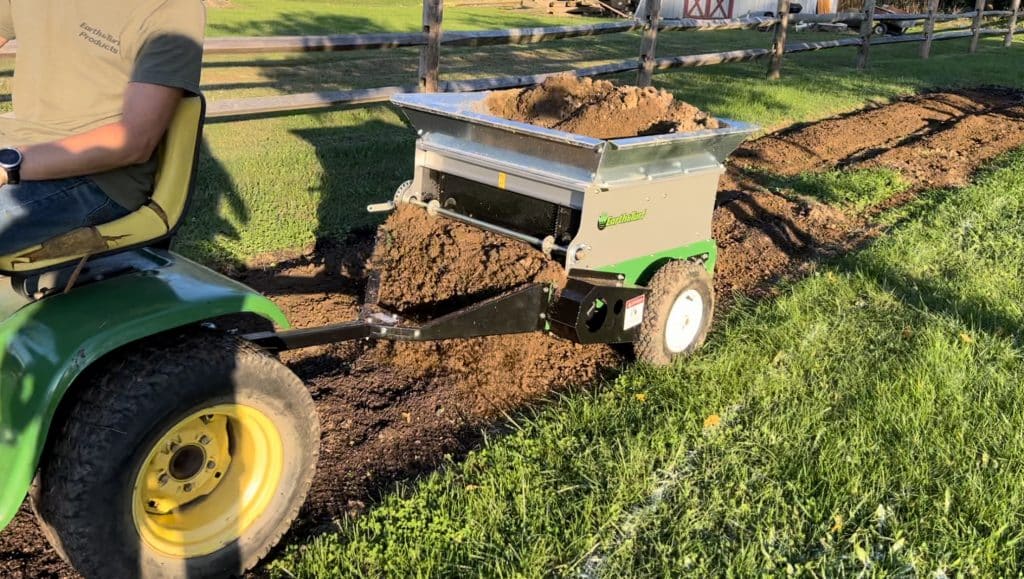
When top dressing your garden the goal is to add a layer of compost usually 1/4 inch to half an inch at a time to apply nutritional value to existing topsoil. The goal here is to revitalize the soil conditions with fresh microbial life, nitrogen, and carbon to add organic matter and a new layer that is easy to work with similar to tilled topsoil. Although applications vary by soil type, the concept is the same. By adding compost you are changing your soil structure to enrich it with a deep dark moisture moisture-retaining topsoil that’s easy to plant and work with.
High-quality compost for top dressing is typically clean from large debris, like sticks and manure turds, and is easier to apply when dry instead of wet and muddy. This compost can be sourced through local municipalities that compost and then retail the material. Additional places can be landscape supply yards, and occasionally through local nurseries or garden centers. Oftentimes it’s easy enough to get a hold of in the standard bagged form, either by a 40 lb. bag or 1 cu. ft. bags, however, it’s usually much cheaper if purchased in bulk by the yard or by truckload. Many local facilities will deliver to you on a dump truck for a charge or will allow you to pick it up yourself with a truck/trailer.
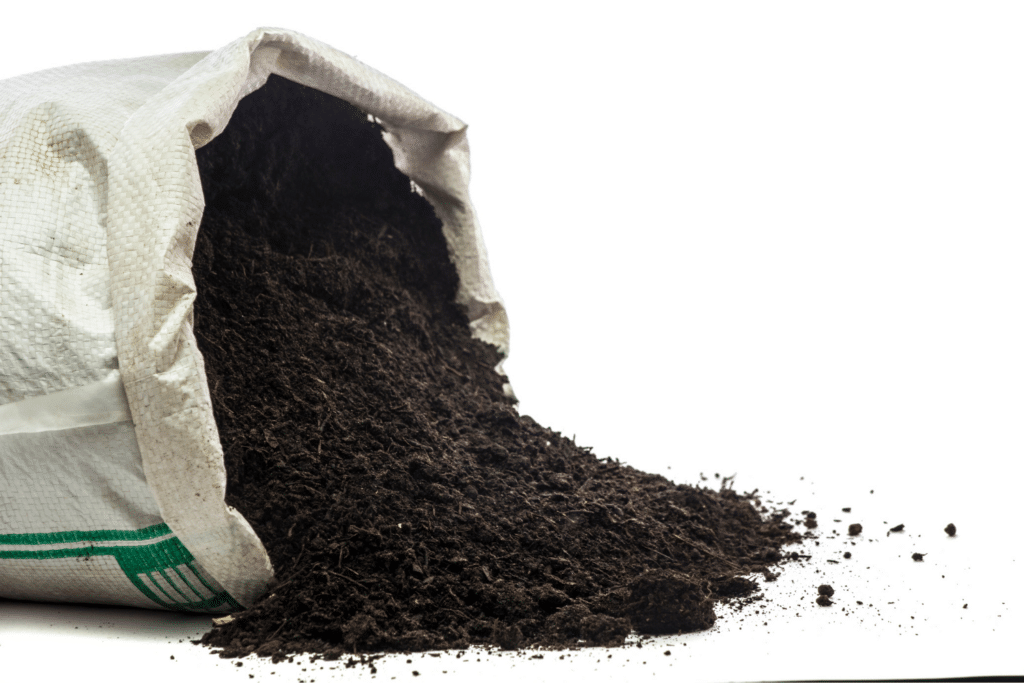
Composting’s ideal application time is typically in the fall, especially so that any unfinished materials that need to be composted and broken down can do so over the winter. Or in the springtime just prior to planting. Finished compost, is applied primarily in spring to prep the ground for planting, but can also be applied during the growing season when done with care.
Mulching
Mulching is a slightly different application that chases the goal of covering the ground so that weeds cannot grow around plants that are intentionally planted. This is a similar process to mulching that homeowners apply in pots and flower beds. However in gardening applications, oftentimes the easier resource to use is mushroom compost or garden mulch, which is a cheaper compost. This compost or mulch may or may not be finished and clean from the composting process and can sometimes contain larger wood chips, leaf and grass clippings, or manure turds. For this reason, it’s not ideal to plant directly into, but will still contribute to the soil health as it breaks down over time.
It’s always important to regularly run soil tests to see the current soil health levels that you are working with and what you’re applying so that you don’t push your soil out of balance with acidic or alkaline materials. Depending on what you’re applying and what you’re planting this can vary. For example: oftentimes berries prefer acidic soil while general veggies and flowers prefer a more balanced soil base which can be thrown off by woodchips breaking down or high nitrogen found in manure. To counteract when soil balances swing to the acidic side with too much woody content, one of the best ways to balance the soil back out is to spread pulverized lime or granular lime on your soil which, can be applied with one of our Dri-Flo drop spreaders.
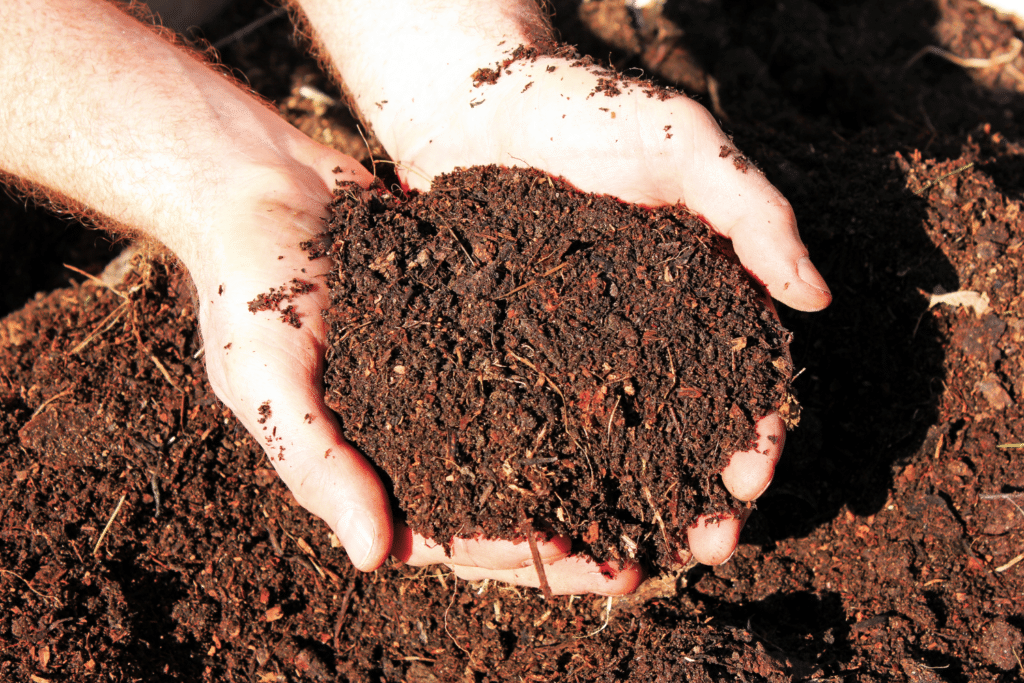
Mulching is a slightly different application that chases the goal of covering the ground so that weeds cannot grow around plants that are intentionally planted. This is a similar process to mulching that homeowners apply in pots and flower beds. However in gardening applications, oftentimes the easier resource to use is mushroom compost or garden mulch, which is a cheaper compost. This compost or mulch may or may not be finished and clean from the composting process and can sometimes contain larger wood chips, leaf and grass clippings, or manure turds. For this reason, it’s not ideal to plant directly into, but will still contribute to the soil health as it breaks down over time.
It’s always important to regularly run soil tests to see the current soil health levels that you are working with and what you’re applying so that you don’t push your soil out of balance with acidic or alkaline materials. Depending on what you’re applying and what you’re planting this can vary. For example: oftentimes berries prefer acidic soil while general veggies and flowers prefer a more balanced soil base which can be thrown off by woodchips breaking down or high nitrogen found in manure. To counteract when soil balances swing to the acidic side with too much woody content, one of the best ways to balance the soil back out is to spread pulverized lime or granular lime on your soil which, can be applied with one of our Dri-Flo drop spreaders.
Types of Materials
There are many different kinds of materials to work with, at several different levels, and each garden has its own different needs.
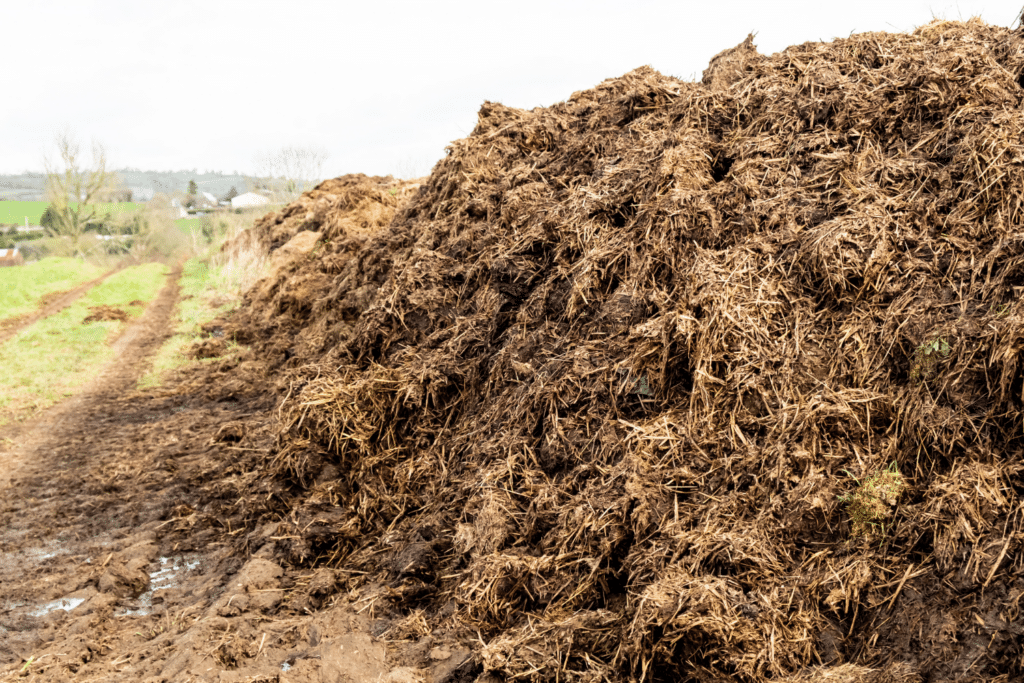
The first level follows the traditional farming principle that what you take off a field, must be replaced. In other words, taking corn for silage must be replaced with manure as it’s gone through the livestock and back out in the manure process. Typically, this can be stinky and not as pleasant to work with. From the small market garden stance, it’s not the best use for farm-to-table food. And is easier for agricultural applications where the manure smell and chunks are not as big of a deal for larger agricultural equipment and food that will be processed over a longer period.
The second level is partially composted manure. This comes from a turned-over manure pile where additional scraps like food scraps and other materials like wood shavings and straw have been added. This makes a great quality compost, but often is not fully finished enough to be the highest quality. This manure can still be stinky, and hot, and includes higher nitrogen values; therefore, it’s not the best to work into or onto gardens that have been freshly planted.
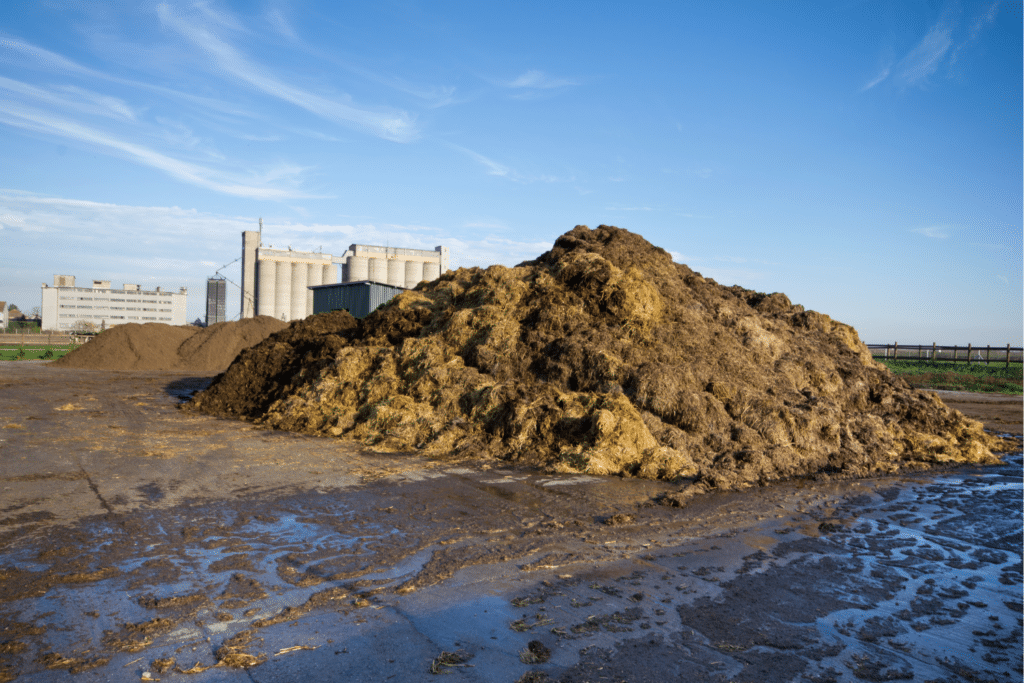
The next level is high-quality compost that has been finished by a compost turner or purchased from a facility that keeps actual specs on the nitrogen, carbon, and organic matter, and that adds specific ingredients to the compost. When making this material, compost suppliers are often very specific and have excellent processes to finish a product that’s ready to use for soil amending or planting. This material can be blended for specific plants and specific purposes because it’s so finely tuned.
The highest quality that we see most common is humus compost. its a material that has finished the breakdown process and has no further to go, typically not much is needed to make a big difference in the gardening application. And it can be expensive to purchase in bulk. This is borderline fertilizer that is very high-quality and will change your soil structure and add microbial life immediately. This will also continually grow for the betterment of your garden, but it does come at a higher cost.
Outside the realm of bulk materials and other organic matter applications like traditional fertilizer applications; where a soil test will clearly describe the need for nitrogen, carbon, iron, etc. Our next application is typically done with a synthetic granular material that may or may not be organic. This is typically more of a fertilizer as we traditionally understand. This process is not right or wrong as it depends on the application of the farmer and their desired inputs for the finished product.
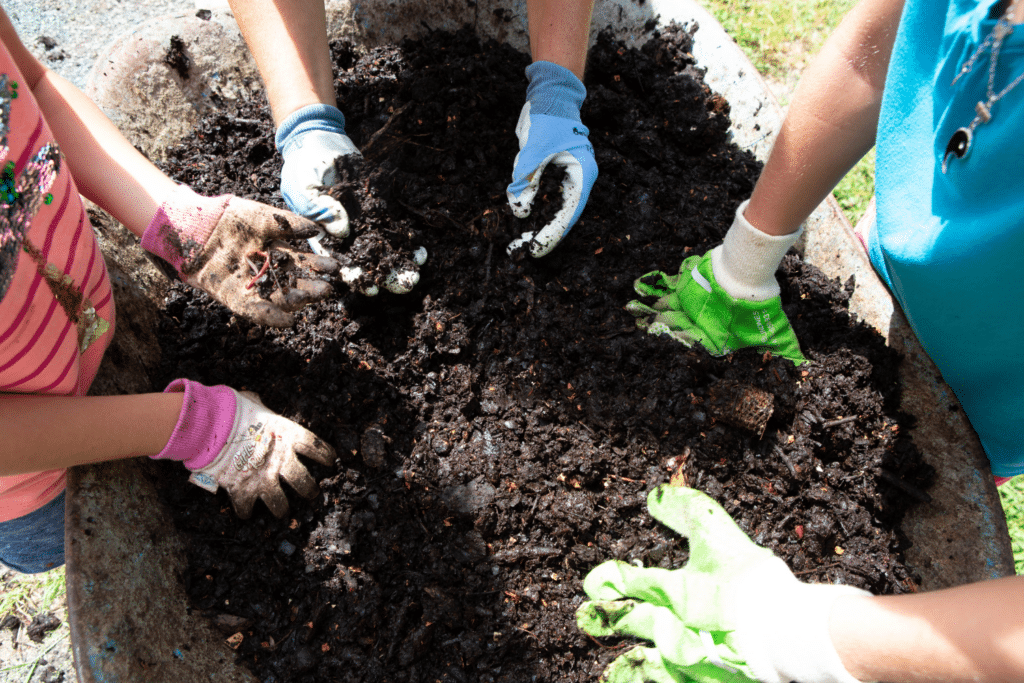
In conclusion, the unit that’s right for you is very dependent on the process and material you’re aiming for. For general topdressing, the 65PT, 220MS, and 320MS do a great job, for mulching, the 65PT, 220H/320H models, and 248PT excel due to their heavy coverage capabilities.
Lastly, fine powdered materials like lime or granular fertilizers work best with a Dri-Flo drop spreader (pick your width per model). If you have more questions on pricing and more, please feel free to reach out to our team by filling out a quote request to get in touch.
Thanks for reading, we hope it’s helpful to you and your farm!
